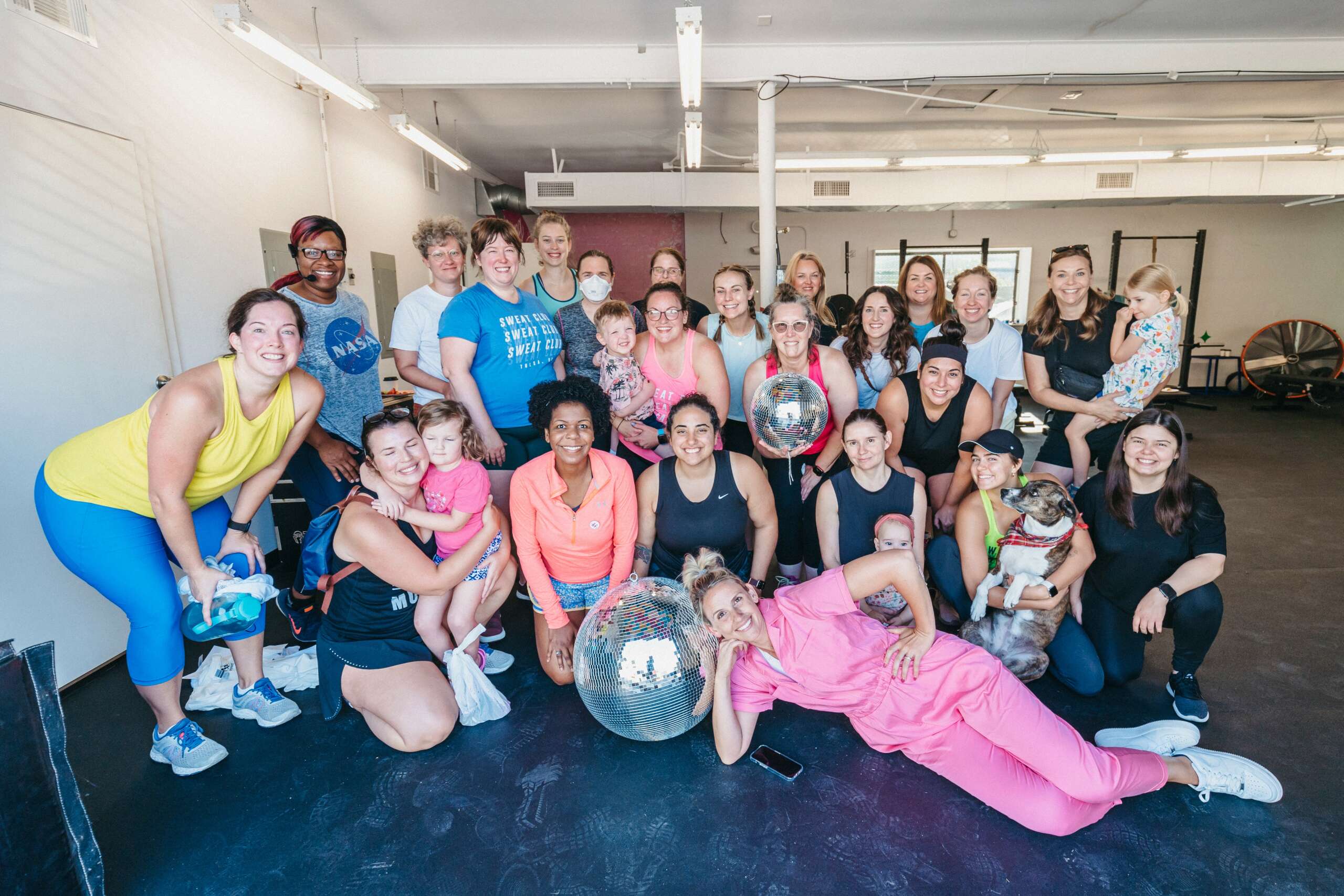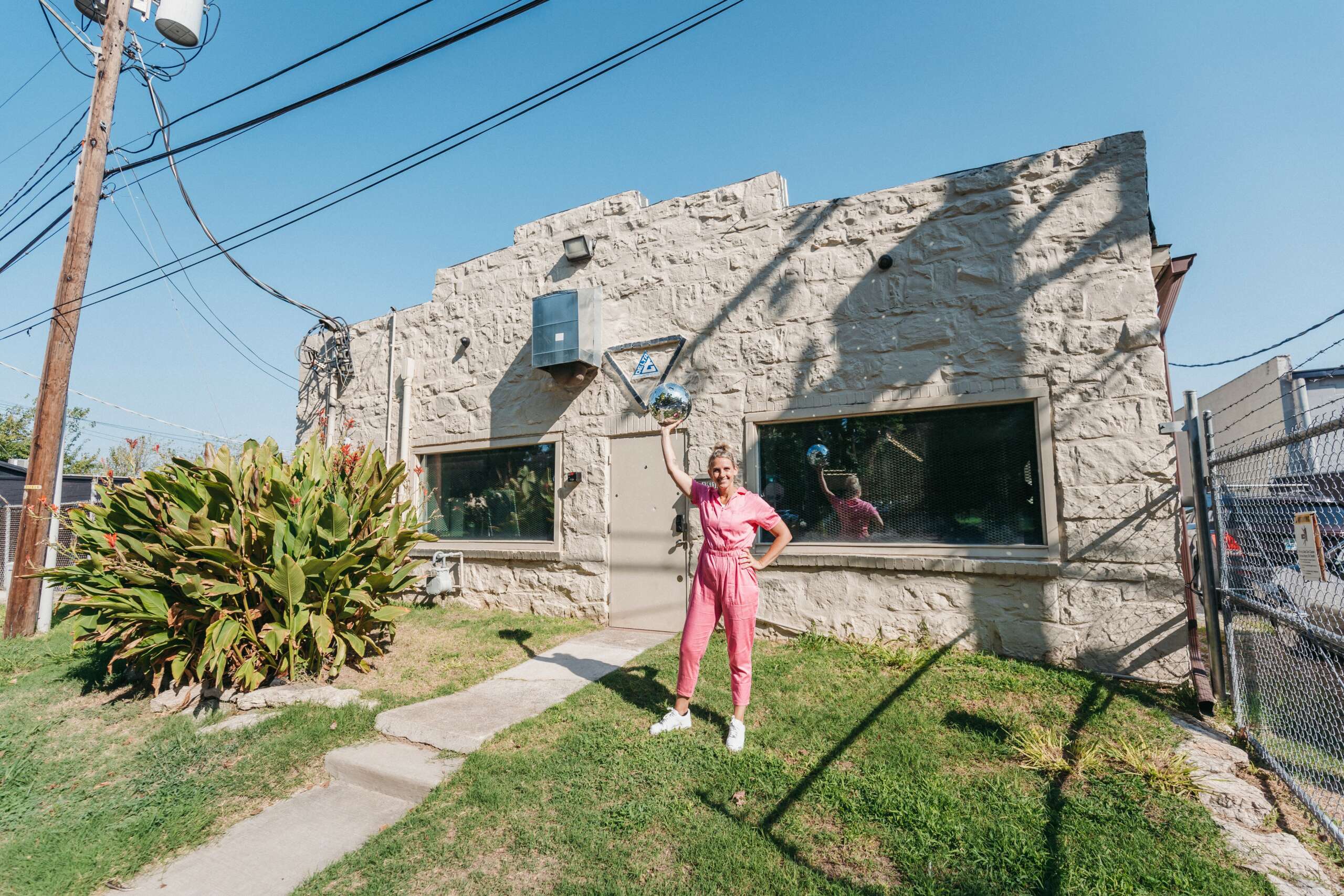We’re excited to introduce you to the always interesting and insightful Jessica Sprenkel. We hope you’ll enjoy our conversation with Jessica below.
Jessica, looking forward to hearing all of your stories today. To kick things off, we’d love to hear about things you or your brand do that diverge from the industry standard.
We are a gym created to serve mostly women (first difference, catering to an underserved demographic) and we do not focus on or promote weight loss, which is a huge industry deviation. Instead we promote strength training and exercise for the purpose of maintaining bone mass, helping you do daily activities with ease, reducing the risk for chronic diseases and (gasp!) enjoyment! Statistics show that exercise adherence is higher in folks who do not have weight loss as a primary goal – and lifelong exercise is a wonderful pathway to overall health.
We love when members come to us after visiting a “standard gym” or a Ken gym, and say how refreshing it feels to be home where the music isn’t too loud, the walls are pink and the music is girly pop.


Awesome – so before we get into the rest of our questions, can you briefly introduce yourself to our readers.
As an athlete, I’ve always had exercise as a part of my life, and I’ve pretty much always enjoyed it. I am straight-sized even at my heaviest, so I’ve never felt uncomfortable in a gym setting or intimidated by the messages that diet culture promotes (fat = lazy etc.). I started out as a group class instructor in 2008, teaching classes that I’d enjoyed taking and as a way to manage my weight. I was a junior in college and had just quit playing basketball for my school, so was looking for a way to build exercise into my life for the first time not centered around a sports season. When I graduated in 2010, I started working at this same gym (InsideOut in Memphis, TN) as a personal trainer. I was given a lot of freedom here to run my own programs and recruit my own clients without any other corporate level hoops. Most of my clients here came to me for weight loss or management either for weddings or just a part of life. I assumed that was why people exercised and what personal trainers were for. And I checked all the boxes of this type of industry training – clients would weigh in with me every session, they’d turn in food logs and we’d adjust each week. I stayed here for two years and really loved the people-forward nature of this work and the gym I was working for. But the diet culture was starting to wear on me.
I took a two-year break for grad school and then moved to Tulsa after graduation. I knew I wanted to open my own gym, very similar to the one I got started at in Memphis. Even though my clients were weight loss focused, InsideOut was different than any gym I’d been to before because they focused on the whole person. I wanted to have my own place like that.
My business and gym now is very different from the trainer I started out as. We do absolutely no weight check ins, we don’t track calories and we openly market that we don’t coach weight loss. I realized that I needed this departure from the industry norm for my mental health as a coach/trainer as much as many of the clients and members I was attracting wanted to learn how to and exercise without focusing on weight loss. I realized I was trying to figure out how to get adults who aren’t playing sports to have the mindset of athletes – we’re not training for basketball but we are training for daily life. Chasing kids. Carrying heavy suitcases. Moving furniture. How can we shift the gym emphasis to performance and how you feel, instead of how much weight you lost last week?
Turns out there are a lot of women who are tired of the toxic diet culture aspect to exercise and do want to strength train, get stronger and feel supported exercising in an environment where they don’t feel pressure to get smaller in 6 weeks.

We often hear about learning lessons – but just as important is unlearning lessons. Have you ever had to unlearn a lesson?
I have had to unlearn everything I grew up knowing about gyms and experiencing about diet culture, as well as some deeply rooted beliefs, in order to build the complete opposite. Some of these include: weighing myself every day to make sure I maintain weight, tracking calories and trying to stay under 1500 for maintenance, that health does have a size/look, I’ll be a faster runner if I’m lighter, I have to workout at high intensity 6 days a week etc.
I remember sitting on a flight looking up the calories in the little snack pack the flight attendants gave out and wondering, “Am I going to have to do it like this for the rest of my life?”
I did keep on that path for a while, including while I co-owned a strength + yoga studio with a business partner. I created and offered signature 12 week lifting programs. It was during these three years of business that I slowly started to step away from the rigidity of the culture I grew up in. We didn’t do weigh ins (but we did do before and after pics, which I don’t do now). We didn’t track food calories. We didn’t go hard 6 days a week, instead 3. But I wasn’t all the way there yet, because weight loss sells. The before and after pictures sell. Because society believes that there is an ideal way to look, and that’s what we were selling.
It was when I fully owned my own place that I was able to decide, I don’t want to promote weight loss anymore. I had learned in grad school about the social determinants of health and that there is so much more to health than a person’s size, and so much more input than just diet and exercise. I wanted SweatClub to be a place women could come and not feel like they were going to be either A) looked at sexually by men or B) be judged or shamed by “the regulars”.
I still sometimes struggle with going so much against the grain of the industry. And yes, our industry is changing but what I learned and absorbed from age 15-25 runs deep and is hard to fully erase.

Let’s talk about resilience next – do you have a story you can share with us?
My first start at owning a gym was 2016-2019. I co-owned a studio that promoted strength training and yoga under the same memberships. I learned so much about business and myself in those three years, I know it was a necessary stepping stone. The business model we had for that studio was not sustainable for me so I opted out when our lease was up for renewal.
I didn’t have a specific plan for going forward but I knew I wanted to stay in fitness and coaching. In the summer of 2019, I connected with a local CrossFit owner who had a side room he was looking to lease. I signed a 2 year lease with him and got started working. Within three months I had my own space ready to go – it was the hardest 3 months of my life! I had a good mix of people from the old studio show up and new folks from working hard to share about SweatClub on social media. Just as things were starting to feel good and steady, March 2020 rolled around.
I had to shut the doors to the gym for 12 weeks. I worked hard to show up with a workout and/or some kind of community building every day. I didn’t have a single member drop membership payments while the doors were closed.
I’ve always just taken everything one small step at a time, and feel the universe as serendipitously answered me every time I need it. It’s been a slow growth but I think the biggest keys have been small steps, staying flexible and putting members first.

Contact Info:
- Website: www.sweatclubtulsa.com
- Instagram: @sweatclubfit
- Facebook: Sweat Club Fit
Image Credits
Jeffrey Metcalf Abbey Wells


